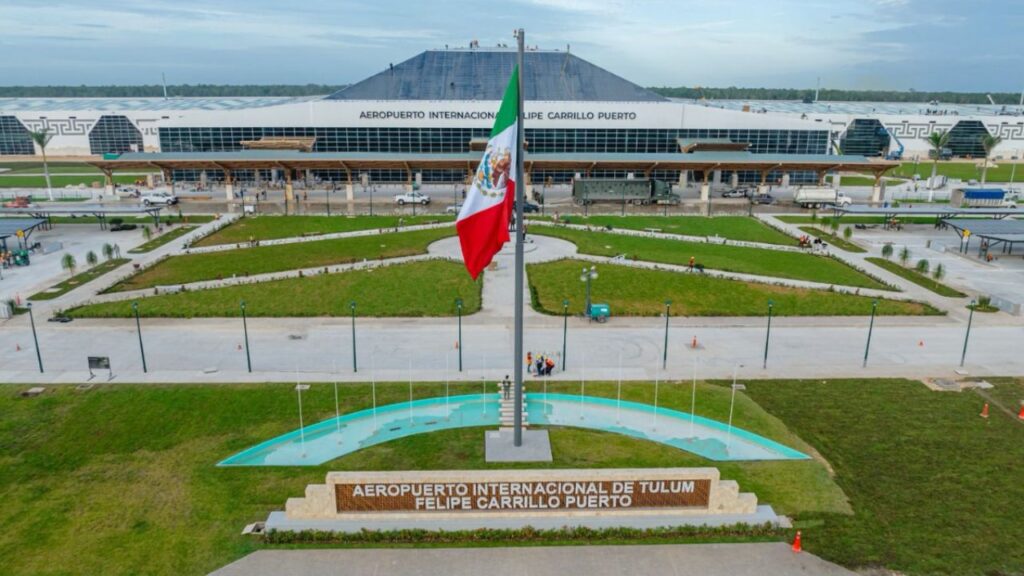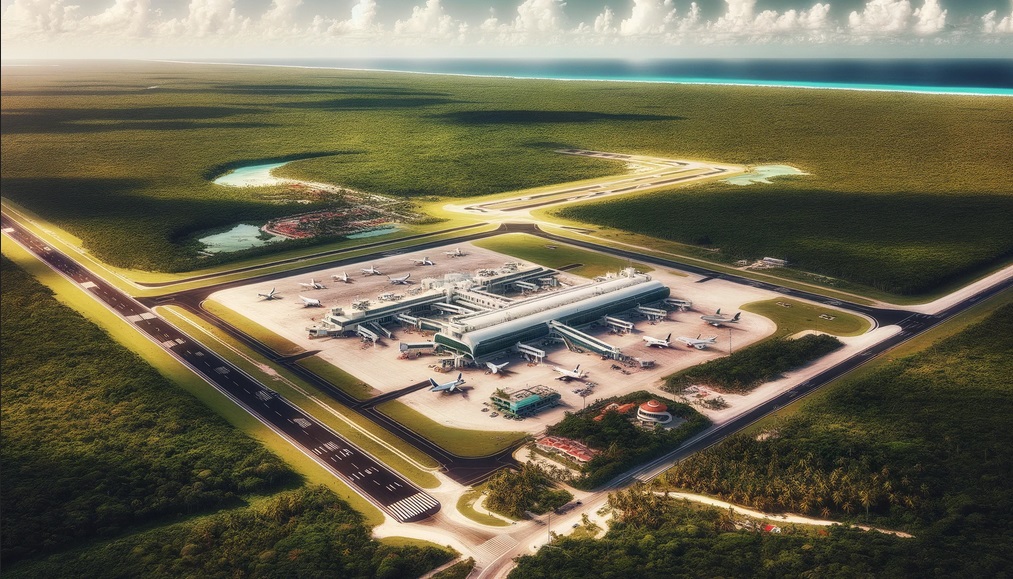Tulum International Airport is an international civilian airport located in the city of Tulum, Quintana Roo, Mexico. The airport is located about 15 kilometers north of the city, on Federal Highway 307.
The airport was inaugurated on December 1, 2023, and is intended to serve the growing tourist traffic to the region. The airport has a 3,500-meter runway, a 30,000-square-meter passenger terminal, and parking for 1,500 vehicles.
In its first stage, the airport will operate domestic and international flights to destinations such as Mexico City, Cancun, Monterrey, Guadalajara, Miami, New York, and Los Angeles.
The Tulum airport is an important infrastructure project that will contribute to the region’s tourism development. The airport will facilitate access to Tulum and its surroundings, which will help attract more visitors to this area of natural and cultural beauty.
Where is the Tulum airport?
Tulum International Airport is located in the municipality of Felipe Carrillo Puerto, Quintana Roo, Mexico. The airport is located about 15 kilometers north of the city of Tulum, on Federal Highway 307.
The airport is located in a tropical jungle area, on the edge of the Sian Ka’an Biosphere Reserve. The airport’s location is strategic, as it is close to the main tourist attractions of the region, such as the Mayan ruins of Tulum, the archaeological zone of Cobá and the Sian Ka’an Biosphere Reserve.
The airport is located at an approximate distance of:
- 15 kilometers north of the city of Tulum.
- 76 kilometers south of the city of Playa del Carmen.
- 160 kilometers north of the city of Cancun.
- 1,200 kilometers southeast of Mexico City.
Current flights
Tulum International Airport operates domestic and international flights to destinations such as:
Domestic destinations: Mexico City, Cancun, Monterrey, Guadalajara, Merida and Villahermosa.
International destinations: Miami, New York, Los Angeles, Houston, San Francisco and Chicago.
Airlines currently operating at the airport are:
- Aeromexico
- Volaris
- Viva Aerobus
- Mexicana
- United Airlines
- American Airlines
- Delta Air Lines
Future flights
It is expected that Tulum International Airport will continue to grow in the coming years, offering more destinations and flight frequencies. Some airlines that have expressed interest in operating at the airport in the future are:
- JetBlue
- Spirit Airlines
- Frontier Airlines
- Interjet
- VivaColombia
- Avianca
The airport is also in talks with European and Asian airlines to offer flights to destinations in those continents.
Tulum International Airport Terminals

Tulum International Airport features a single passenger terminal, divided into two levels strategically designed to enhance efficiency. The upper level houses the check-in, security, and boarding areas, while the lower level accommodates arrivals, baggage claim, and customs facilities.
With an impressive surface area of 30,000 square meters, this terminal has the capacity to serve up to 4 million passengers annually, characterized by its accessible and spacious design, featuring wide hallways and open spaces for passenger comfort.
The check-in area is equipped with 40 service counters and 10 self-service kiosks, ensuring a streamlined experience for travelers. For the safety and security of all, the terminal boasts 12 security lines and 8 advanced baggage scanners. Furthermore, the boarding area comprises 13 gates to facilitate efficient boarding processes.
Arrival areas feature 12 baggage carousels to expedite luggage delivery to passengers, while baggage claim areas offer 10 service counters for any additional needs.
To cater to travelers’ needs, Tulum International Airport’s terminal provides an array of services, including high-quality restaurants, bars, duty-free shopping, banking services, ATMs, and exclusive VIP lounges.
The Tulum International Airport terminal plays a vital role as a gateway to the region, facilitating access to Tulum and its surroundings. This airport serves as a crucial driver in promoting tourism in this area of natural beauty and cultural richness, attracting a growing number of visitors to this stunning region.

